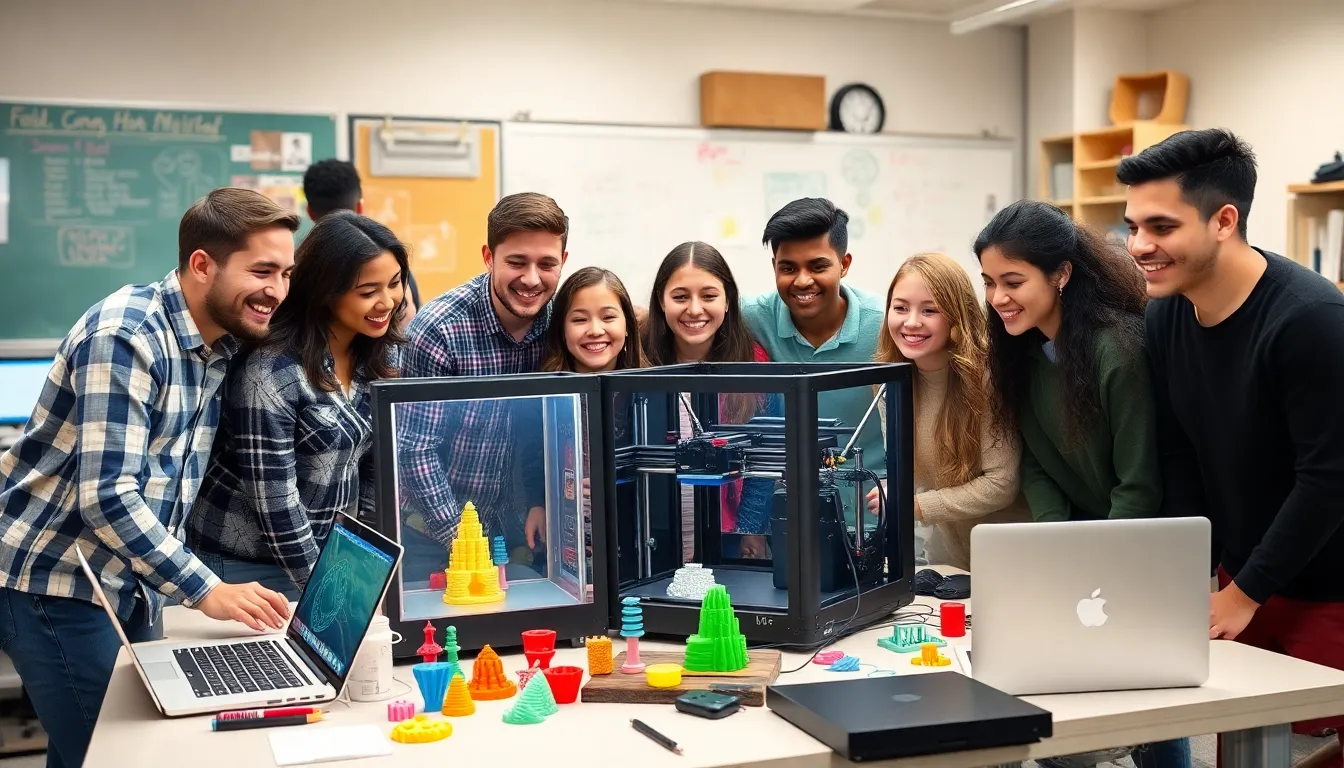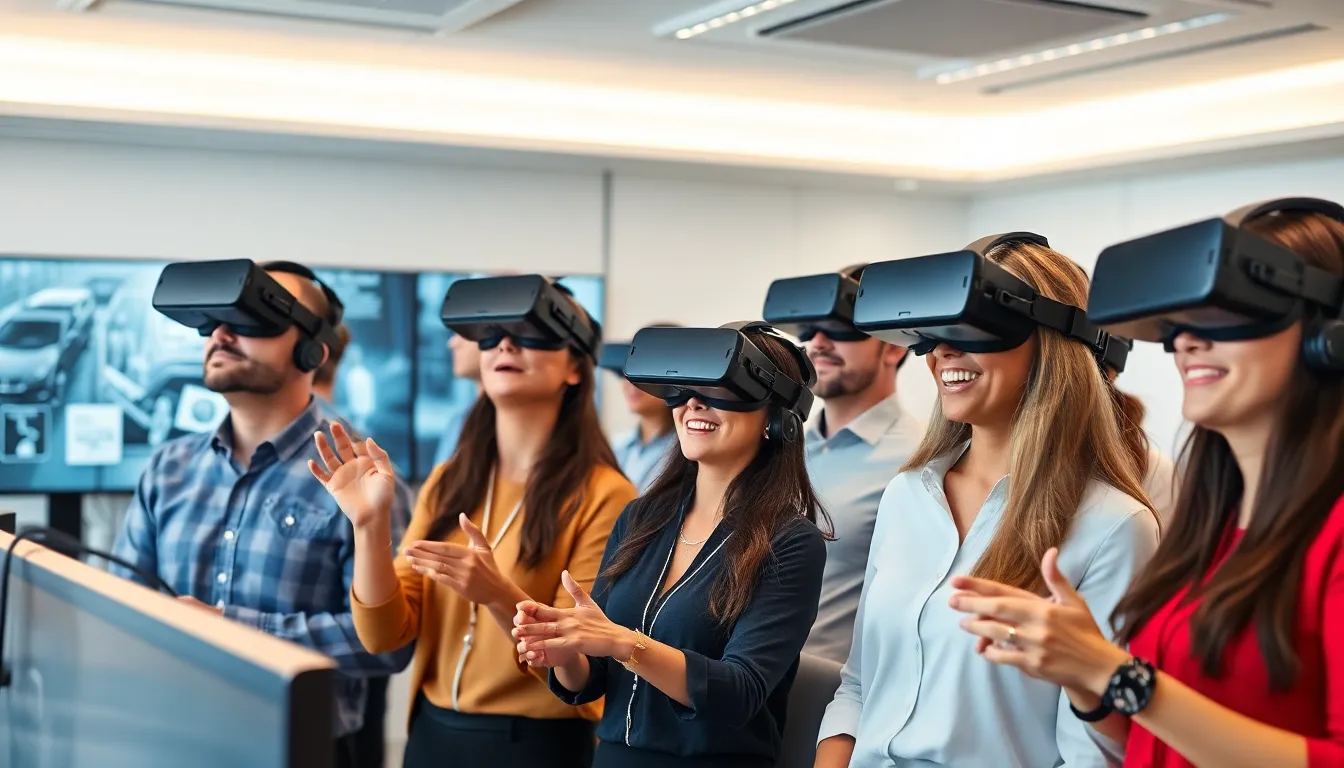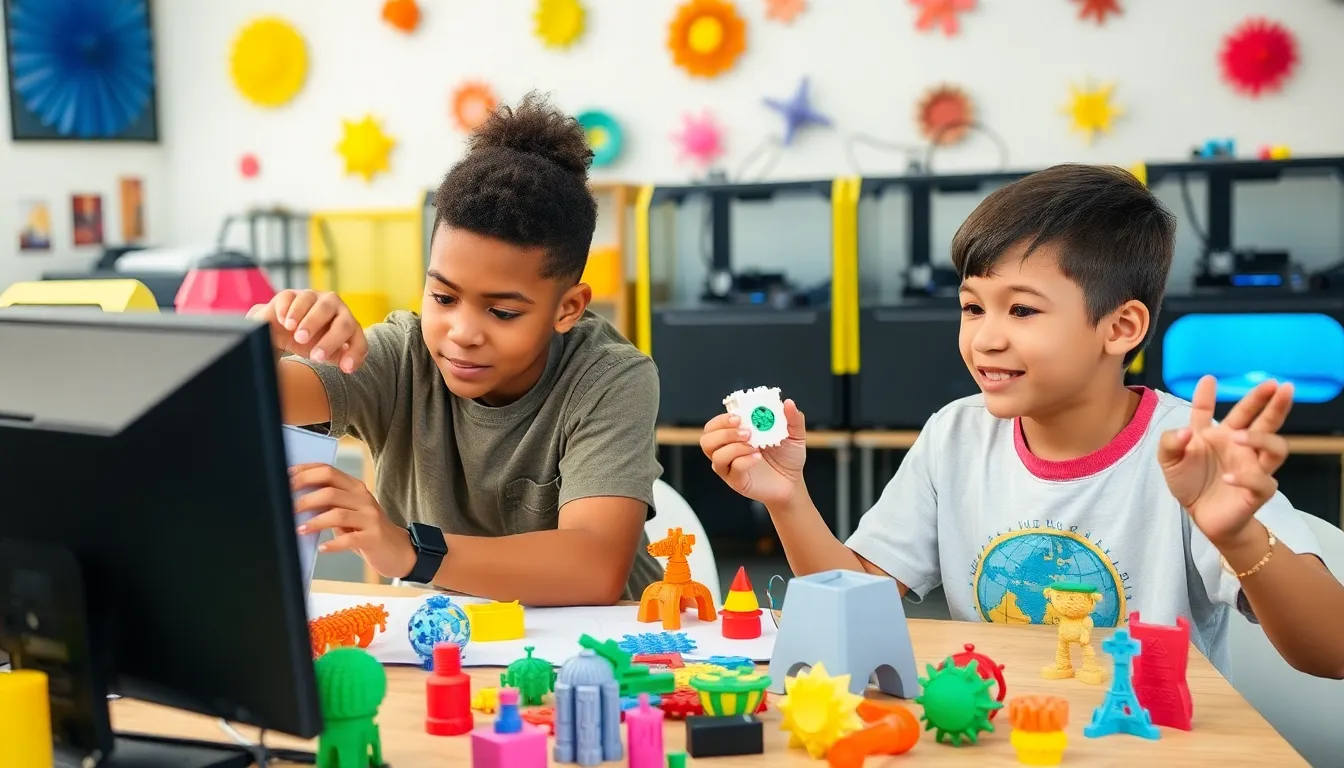Imagine a world where students can turn their wildest ideas into reality—literally! With 3D printing, that dream isn’t just a fantasy; it’s happening right in classrooms. This revolutionary technology empowers students to unleash their creativity and tackle real-world problems, all while having a blast. Who knew learning could feel like playing with high-tech toys?
Table of Contents
ToggleOverview of 3D Printing
3D printing represents a revolutionary technology transforming education. It enables students to design and create physical objects from digital models, fostering hands-on learning. Various industries utilize 3D printing, including healthcare, architecture, and engineering. Students engage in projects that reflect real-world applications, enhancing their problem-solving skills.
Learning environments benefit from this technology by integrating creativity with practical skills. Students use 3D printers to develop prototypes or artistic pieces, emphasizing collaboration during the process. Enhanced spatial awareness develops as they navigate through design and assembly stages. The technology provides immediate feedback on student work, guiding improvement through iterative processes.
Accessibility plays a significant role in the adoption of 3D printing in classrooms. Many schools invest in user-friendly printing software and robust printers, ensuring students of all ages can participate. Various resources are available, including online tutorials and design templates, making it easier for beginners to start creating. Proof of concept testing emerges as students evaluate their designs, reinforcing engineering principles.
Extracurricular programs often include 3D printing projects, allowing for exploration beyond the traditional curriculum. Workshops and maker spaces inspire creativity by providing tools and materials for hands-on experiences. Competitions further motivate students to innovate and share their projects with peers.
Overall, the impact of 3D printing in education extends beyond mere creation. This technology equips students with valuable skills, encourages teamwork, and enhances understanding of complex concepts, paving the way for future careers in STEM fields.
Educational Benefits of 3D Printing

3D printing offers substantial educational benefits, enhancing the learning experience for students. This technology allows students to engage in hands-on projects, transforming their concepts into physical objects.
Enhancing Creativity
Creativity sees a significant boost through 3D printing. Students can design unique models, from intricate sculptures to practical tools, fostering originality. New ideas often flourish when students visualize their thoughts. Exploration of various design software encourages experimentation, allowing for personalized artistic expression. Collaborative projects promote teamwork, enabling students to combine diverse ideas into cohesive designs. Educational environments featuring maker spaces support innovative processes and provide essential resources for artistic endeavors.
Improving Problem-Solving Skills
Problem-solving skills develop significantly with 3D printing integration. Students encounter real-world challenges, necessitating thoughtful design and functionality considerations. Assessing a project’s feasibility requires critical thinking and planning. Iterative design processes enable students to refine their solutions, emphasizing resilience in overcoming obstacles. Immediate feedback from prototypes offers insights for necessary adjustments, further enhancing understanding. Real-world applications, such as engineering challenges or product design, encourage practical thinking, preparing students for future careers.
Creative 3D Printing Ideas for Students
3D printing offers endless possibilities for students. Engaging projects stimulate creativity and enhance learning experiences.
Models for Science Projects
Students explore scientific concepts by creating models with 3D printing. Examples include anatomical structures like hearts, bones, or cellular models. Environmental projects, such as ecosystems, allow visual representation of interconnectivity and processes. Physical models of molecules demonstrate complex chemical structures, aiding in understanding. These hands-on tools make abstract concepts tangible and easier to grasp.
Art and Design Creations
Art and design students can utilize 3D printing for innovative projects. Custom jewelry designs showcase creativity and personal expression. Sculptures, whether abstract or realistic, provide unique opportunities for artistic exploration. Functional art pieces blend aesthetic appeal with practical use, showcasing ingenuity. Design challenges encourage experimentation with materials and techniques, fostering a rich creative environment.
Practical Classroom Tools
Educators benefit from 3D printing by creating practical classroom tools. Organizers for supplies streamline classroom management and enhance efficiency. Educational aids like tactile math manipulatives help students understand complex concepts through interaction. Custom tools, like rulers or protractors, facilitate hands-on learning experiences. Together, these resources promote active engagement and foster an effective educational environment.
Getting Started with 3D Printing
Students can dive into 3D printing by selecting the right tools and resources. This engagement enhances their learning experience and fosters creativity and problem-solving.
Choosing the Right Printer
Selecting an appropriate 3D printer plays a critical role in a student’s success. Desktop printers offer user-friendly options, while more advanced models suit specific project needs. Several criteria exist for choosing printers, including build size, print resolution, and material compatibility. Popular models like the Creality Ender 3 or the Prusa i3 MK3S are often recommended for educational settings. Additionally, affordability and reliability should inform decisions. Researching community reviews and guidance helps identify the best choice for a classroom environment. A well-selected printer can significantly impact students’ engagement and enthusiasm.
Software and Resources
Choosing the right software enhances the design process for students. Programs like Tinkercad and Fusion 360 provide intuitive interfaces suitable for beginners. Accessing online tutorials and forums supports learning and troubleshooting. Many resources are available, including free courses and instructional videos. Students can explore libraries of downloadable models, offering inspiration and a starting point for their projects. Educators can utilize these tools to create structured lessons around 3D printing. Leveraging quality software enhances students’ confidence and skills in design, preparing them for future applications in various fields.
3D printing is revolutionizing education by empowering students to transform their ideas into tangible creations. This technology not only enhances creativity but also cultivates essential skills like problem-solving and collaboration. As students engage in hands-on projects they gain practical experience that prepares them for future challenges in various fields.
By incorporating 3D printing into their learning, students can explore innovative concepts while enjoying the process. With the right tools and resources, educators can create dynamic learning environments that inspire curiosity and foster a love for exploration. Embracing 3D printing opens doors to endless possibilities, enriching the educational journey for students everywhere.






